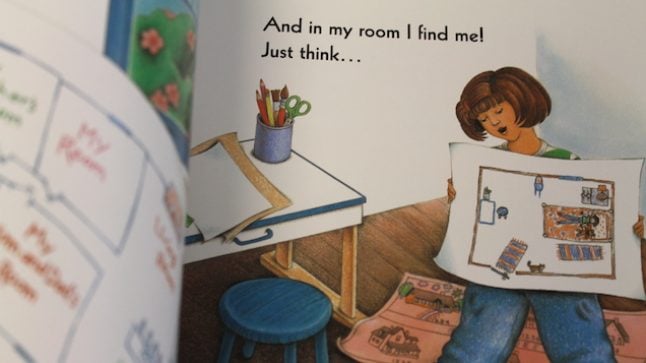Series: Book Ideas
4 Children’s Books to Shape Up Geometry Skills

From recognizing octagonal stop signs to remembering where the cookies are stored, children encounter geometry early and often. Regularly engaging children with some of the names, rules, and applications involved in geometry will allow them to make the most of their natural skills in this area. There are plenty of children’s books that kids love to further pique their interest. We’ve listed a few of our favorites here.
-
Shapes, Shapes, Shapes by Tana Hoban
Tana Hoban has a number of children’s books featuring eye-catching photos centered around a single theme. In this case, you guessed it, she focuses on shapes and the various ways they appear in everyday life. With no text and not even a story to follow, this book is great for inspiring children to think and talk about the shapes they encounter in their own lives.
-
Changes, Changes by Pat Hutchins
Changes, Changes tells the story of a wooden family living in a house of blocks. Whenever a problem occurs, they must come up with a shape-based solution. When their house catches fire, for instance, they engineer a fire engine out of blocks. Kids can “play along” with the blocks in the classroom or come up with their own geometric solutions to the various calamities the family encounters.
-
Me on the Map by Joan Sweeney
Map-reading can be a challenging concept for children (and adults!) to grasp, but Me on the Map presents the topic in a kid-friendly, step-by-step manner. Starting with a map of a young girl’s room, the book “zooms out” to display maps of increasing complexity: a map of her house leads to a map of her street; a map of her continent leads to a map of the world. After reading Me on the Map, children may be eager to construct their own maps of their bedroom, classroom, house or school.
-
We’re Going on a Bear Hunt by Michael Rosen and Helen Oxenbury
A family sets out to catch sight of a bear but encounters several obstacles on the way in this classic children’s chant story. The descriptions of how they handle these hurdles (walking through a snowstorm, for example) is great practice for positional prepositions, which can be especially difficult for children to master. The sounds that accompany the family’s escapade (splashing through water, squelching through mud), keeps youngsters entertained and involved throughout the book.